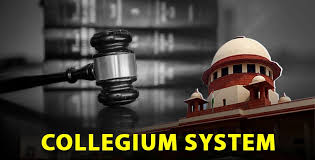Ohio Administrative Code Title 4501:3 - Emergency Management Agency
Ohio Administrative Code (OAC) Title 4501:3 – Emergency Management Agency
Title 4501:3 of the Ohio Administrative Code (OAC) governs the Ohio Emergency Management Agency (Ohio EMA), which is the state agency responsible for coordinating emergency management efforts across Ohio. This includes preparedness, response, recovery, and mitigation efforts related to natural disasters, accidents, public health emergencies, and other hazards.
Purpose of Title 4501:3
The primary purpose of Title 4501:3 is to establish the regulatory framework under which Ohio's emergency management system operates. It outlines the organization, functions, responsibilities, and procedures of the Ohio Emergency Management Agency, as well as the coordination between local, state, and federal entities during emergencies.
Key Provisions of Title 4501:3
1. Organization and Structure of the Ohio Emergency Management Agency (Ohio EMA)
Ohio EMA Structure: The Ohio Emergency Management Agency operates under the Ohio Department of Public Safety and works in conjunction with local emergency management agencies, federal agencies like FEMA, and state authorities.
Director of Ohio EMA: The Director of Ohio EMA is appointed by the Governor and is responsible for overseeing all functions of the agency, including the development and implementation of emergency management policies and strategies.
Emergency Support Functions: Ohio EMA organizes its operations into various Emergency Support Functions (ESFs) that align with different areas of emergency management such as public safety, communications, health, logistics, and more.
2. Emergency Management Planning and Coordination
Statewide Emergency Operations Plan (EOP): Title 4501:3 establishes the requirement for Ohio EMA to maintain and regularly update the State Emergency Operations Plan (EOP). This plan serves as the blueprint for state-level coordination in response to major disasters and emergencies.
Local Coordination: The agency works in collaboration with local emergency management agencies in counties, cities, and townships across Ohio to ensure effective disaster response. Local emergency plans must align with the state’s overall emergency management plan.
Incident Command: During emergencies, Ohio EMA facilitates the implementation of the Incident Command System (ICS), which ensures clear leadership, delegation, and coordination of resources and efforts.
3. Hazard Mitigation and Preparedness
Hazard Mitigation Plans: Title 4501:3 requires the development of hazard mitigation plans at both state and local levels. These plans identify potential hazards and vulnerabilities, as well as strategies to reduce the risk of disasters and improve community resilience.
Preparedness Programs: Ohio EMA is tasked with coordinating training programs, public education campaigns, and exercises aimed at increasing awareness and preparedness for emergencies among the general public, businesses, and emergency responders.
4. Response and Recovery Operations
Emergency Declaration: The regulations define the procedures for the Governor to issue an emergency declaration and request federal assistance when an incident exceeds state or local capabilities.
Emergency Response Teams: Ohio EMA works with specialized response teams, such as Search and Rescue and Hazardous Materials teams, to respond to specific threats.
Recovery Support: After an emergency event, Ohio EMA coordinates recovery operations, including securing federal funding for reconstruction, providing disaster relief to affected communities, and assisting local governments with the recovery process.
5. Funding and Grants
Emergency Management Grants: Title 4501:3 establishes criteria for the distribution of state and federal funds to local emergency management agencies for the purpose of improving preparedness, response, and recovery capabilities.
Grants may be provided for training, exercises, equipment, and infrastructure needed to enhance local emergency response systems.
The Homeland Security Grant Program (HSGP) and Pre-Disaster Mitigation Program (PDM) are some key funding sources managed through Ohio EMA.
6. Public Safety and Health Emergencies
Public Health Emergencies: Ohio EMA coordinates with the Ohio Department of Health to manage responses to public health emergencies, including pandemics, disease outbreaks, and biological threats.
Public Safety Communications: Title 4501:3 emphasizes the need for interoperable communication systems between local, state, and federal agencies, including emergency alert systems, radio networks, and social media platforms for rapid dissemination of information during a crisis.
7. Training and Exercises
Training Programs: The Ohio EMA provides training and certification programs for emergency responders, local officials, and community leaders to ensure they are prepared to handle various disaster situations.
Exercises and Drills: Regular drills and simulations are required by Title 4501:3 to practice coordination among agencies and assess the effectiveness of emergency plans. These exercises test the state’s ability to respond to hypothetical emergency scenarios.
8. Disaster Recovery Centers (DRCs)
DRC Operations: Ohio EMA coordinates the establishment and operation of Disaster Recovery Centers to provide affected individuals and communities with critical information and services after an emergency event. These centers typically provide access to financial assistance, temporary housing, and mental health services.
9. Roles of the Private Sector
Private Sector Coordination: Title 4501:3 highlights the role of the private sector in emergency management. Ohio EMA works with businesses, non-profits, and other organizations to ensure that the state's response and recovery efforts are as effective as possible.
This includes ensuring that critical infrastructure such as utilities, transportation, and supply chains are maintained and restored during and after emergencies.
10. Emergency Management Volunteering
Volunteer Programs: Ohio EMA facilitates the use of volunteers during disaster response efforts, including coordination with Ohio Voluntary Organizations Active in Disaster (Ohio VOAD). Volunteers are crucial for supporting tasks such as search and rescue, shelter operations, and community outreach during emergencies.
Significance of Title 4501:3
Coordinated Disaster Response: Title 4501:3 provides the legal framework for Ohio EMA to ensure that the state’s disaster response efforts are well-coordinated and effective across multiple levels of government.
Enhanced Preparedness: The regulations require regular planning, training, and exercises to ensure that Ohio's communities are ready to handle a wide range of emergencies, from natural disasters to public health crises.
Effective Recovery: The provisions for recovery and relief ensure that Ohio can quickly mobilize resources to assist individuals, businesses, and local governments in returning to normalcy after an emergency.
Collaboration with Federal Agencies: Ohio EMA’s coordination with federal agencies like FEMA allows for timely access to national resources and assistance during large-scale disasters.


















0 comments